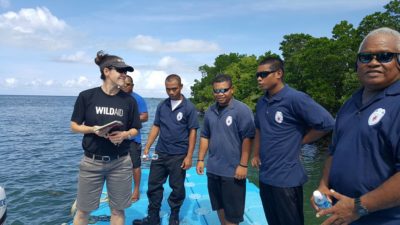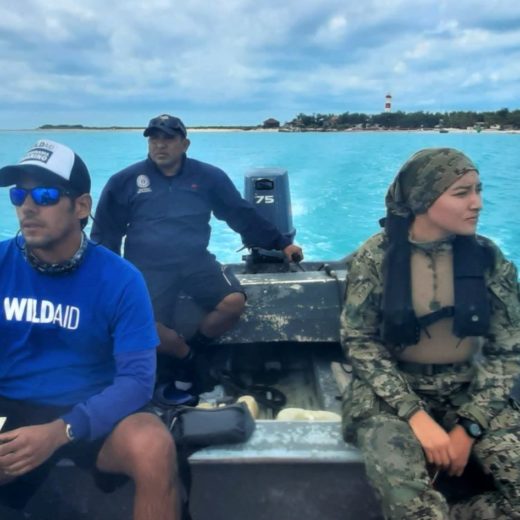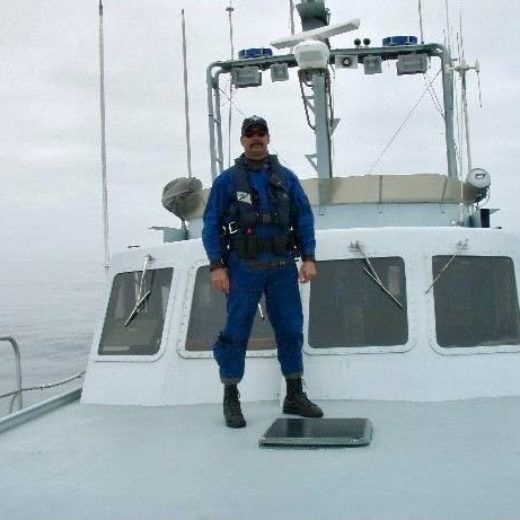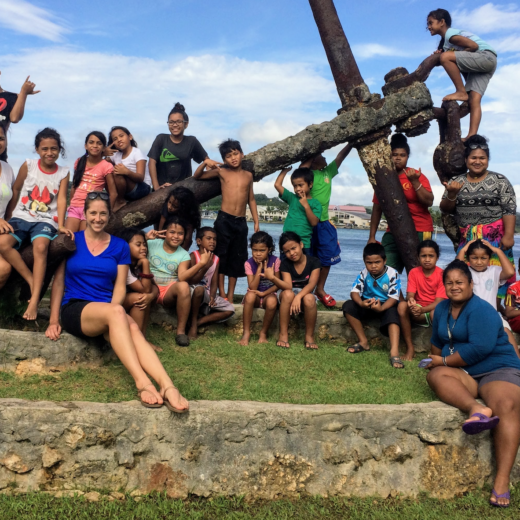
Originally published on WildAid Marine on March 31 2021.
This Women’s History Month, WildAid Marine has highlighted some of the powerful women that make our team what it is. As the month comes to an end, it only makes sense to highlight the woman behind it all: WildAid Marine’s Program Director, Meaghan Brosnan.
Meaghan Brosnan, Marine Program Director
As the Program Director for WildAid Marine, Meaghan leads the charge for strengthening the enforcement of marine protected areas (MPAs), fisheries, and other priority marine areas. Meaghan works directly with partners abroad, coordinates WildAid Marine’s Program Officers, and establishes relationships with governments and local organizations. Meaghan’s unique expertise, starting with her experience in the U.S. Coast Guard, has helped her to redefine what it means to successfully protect and enforce our priority marine areas.
As a mom, wife, and boss, Meaghan sacrifices a lot for her family and career, admitting that stress has become an everyday part of life. Meaghan explained how she maintains her mental and physical health by eating right, staying active, and learning to say “no.” When you are as busy as Meaghan, boundaries are essential; Meaghan believes that when you take care of yourself, you can work harder and smarter.
What first got you interested in oceans? Was it a documentary? A book? A friend?
I grew up near Long Island Sound in Connecticut and when I was very young, I attended a marine science summer camp. We got to play in tide pools and salt marshes and learned to identify the different animals. I was hooked and never looked back!
How did your career in conservation start?
After graduating from the Coast Guard Academy, I joined the Coast Guard and was stationed on a Cutter based in Guam. On one of our patrols, we came across an abandoned high-seas driftnet and decided to retrieve it since we had the deck space and were heading back to homeport where we could dispose of it. We had no idea what a huge project we had taken on. The ship was a buoy tender so it had a large wide-open deck space and a heavy lift crane, usually used to pick up and repair buoys. It took nearly all of our daylight to get the net onboard and, by the time we were done, the entire deck was filled and piled 20 feet high with nets. It was appalling to see how many beautiful marine animals had been killed by it. Needless to say, it left quite the impression. I had no idea then, but that was the start of my conservation career. My next tour was as a law enforcement officer in Alaska enforcing, among other things, fisheries, endangered species, and marine mammal laws. With that, it all just clicked – here was the direct way I could prevent the kind of appalling levels of unnecessary killing and waste that we saw when recovering that high-seas driftnet.
What is one thing about your job or the work you do that might surprise people?
Between all the travel to beautiful places and exciting law enforcement cases, there is a lot of truly essential…and boring…staff work that is needed to run the Marine Program and support our partners on the water. This includes things like making sure there are checklists and standard operating procedures in place and being used, ensuring evidence is documented and processed correctly, and more. The fact that we, as a program, embrace this simple yet impactful work is an important part of our unique value-add.
What gives you hope for the future of our oceans?
Every single ranger, enforcement officer, and leader we support gives me hope. Their dedication and the sacrifices they make to protect our oceans are truly humbling.
If you could tell your younger self one thing, what would it be?
If you are going to live the way you want to live, life is just going to be a bit chaotic. Embrace it!
What is the best advice for young women trying to go into conservation?
Build a network and use it. If it feels weird to ask for help or advice from people you barely know…I get it…push through it. Life and careers will be richer, and you’ll have greater opportunities to make the change you want to see in the world.
Stay in touch and get the latest WildAid updates.
SIGN UPAbout WildAid
WildAid is a non-profit organization with a mission to protect wildlife from illegal trade and other imminent threats. While most wildlife conservation groups focus on protecting animals from poaching, WildAid primarily works to reduce global consumption of wildlife products such as elephant ivory, rhino horn and shark fin soup. With an unrivaled portfolio of celebrity ambassadors and a global network of media partners, WildAid leverages more than $308 million in annual pro-bono media support with a simple message: When the Buying Stops, the Killing Can Too.
Journalists on deadline may email communications@wildaid.org


